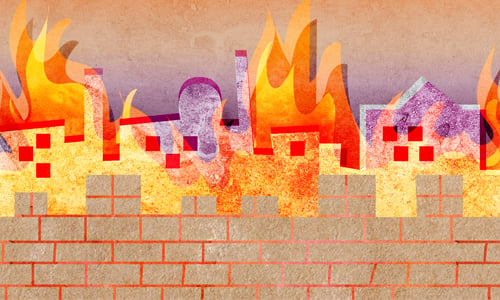Observances:
There are various mourning-related customs and observances that are followed for the entire three-week period (until midday of the 10th of the Hebrew month of Av, or—if that date falls on Friday—the morning of that day). We do not cut our hair, purchase new clothes, or listen to music. No weddings are held.
The 17th of Tammuz
17 Tammuz is a fast day, on which we refrain from eating and drinking from dawn to nightfall. The fast commemorates five tragic events that occurred on this date, including Moses breaking the Tablets and breaching of the walls of Jerusalem.
Those who mourn the destruction of Jerusalem will merit seeing it rebuilt with the coming of Moshiach
The Nine Days
The final Nine Days of the Three Weeks are a time of intensified mourning. Starting on the first of Av, we refrain from eating meat or drinking wine, and from wearing freshly laundered clothes.
The 9th of Av
Nine Av is a more stringent fast than 17 Tammuz. It begins at sunset of the previous evening, when we gather in the synagogue to read the Book of Lamentations. Besides fasting, we abstain from additional pleasures: washing, applying lotions or creams, wearing leather shoes, and marital relations. Until midday, we sit on the floor or on low stools.
The Inner Message
There is more to the Three Weeks than fasting and lamentation. Our sages tell us that those who mourn the destruction of Jerusalem will merit seeing it rebuilt with the coming of Moshiach. Furthermore, through learning about the structure, function and significance of the Holy Temple at this time of year, it’s as if we are actually rebuilding it.
May that day come soon, and then all the mournful dates on the calendar will be transformed into days of tremendous joy and happiness.

